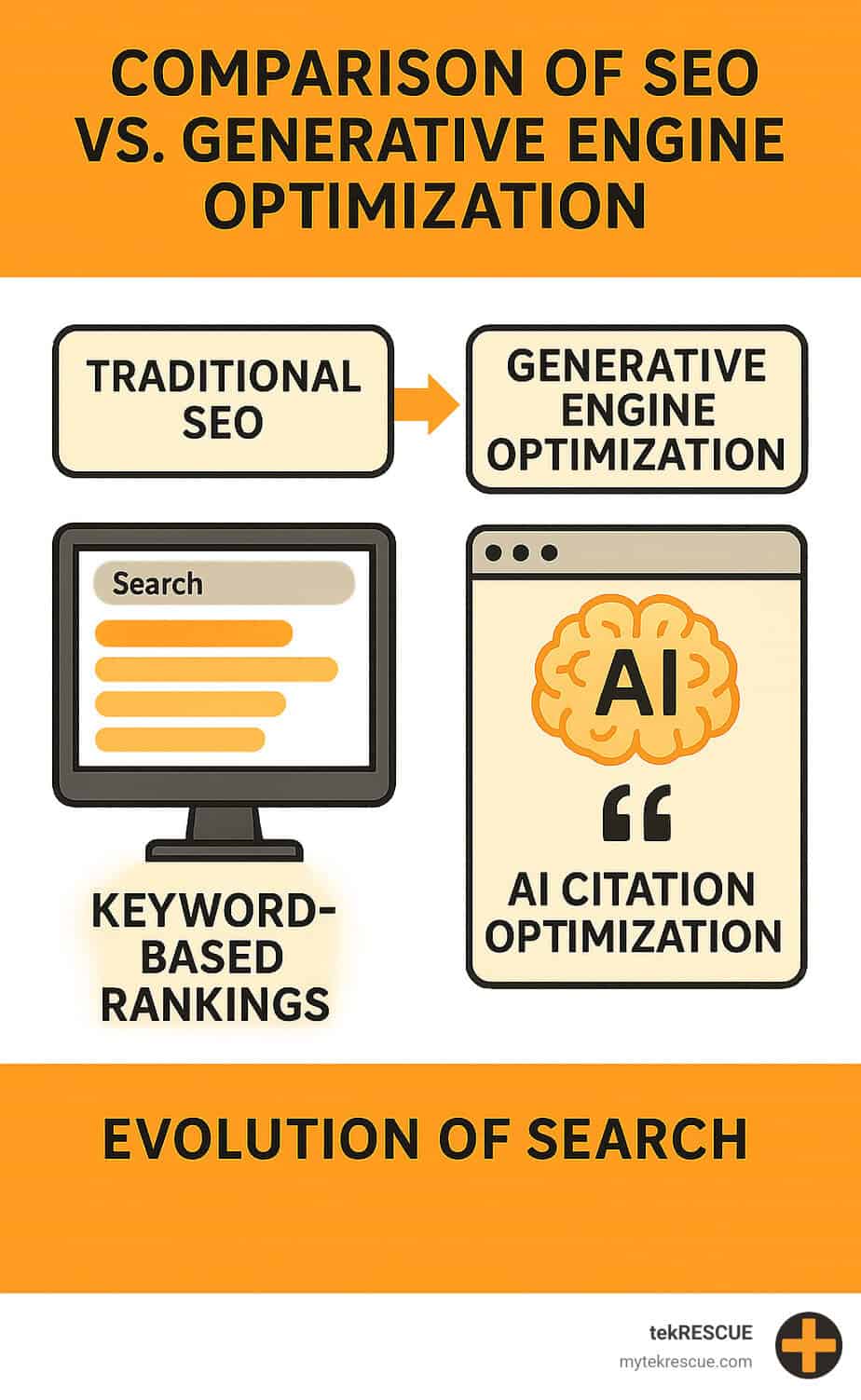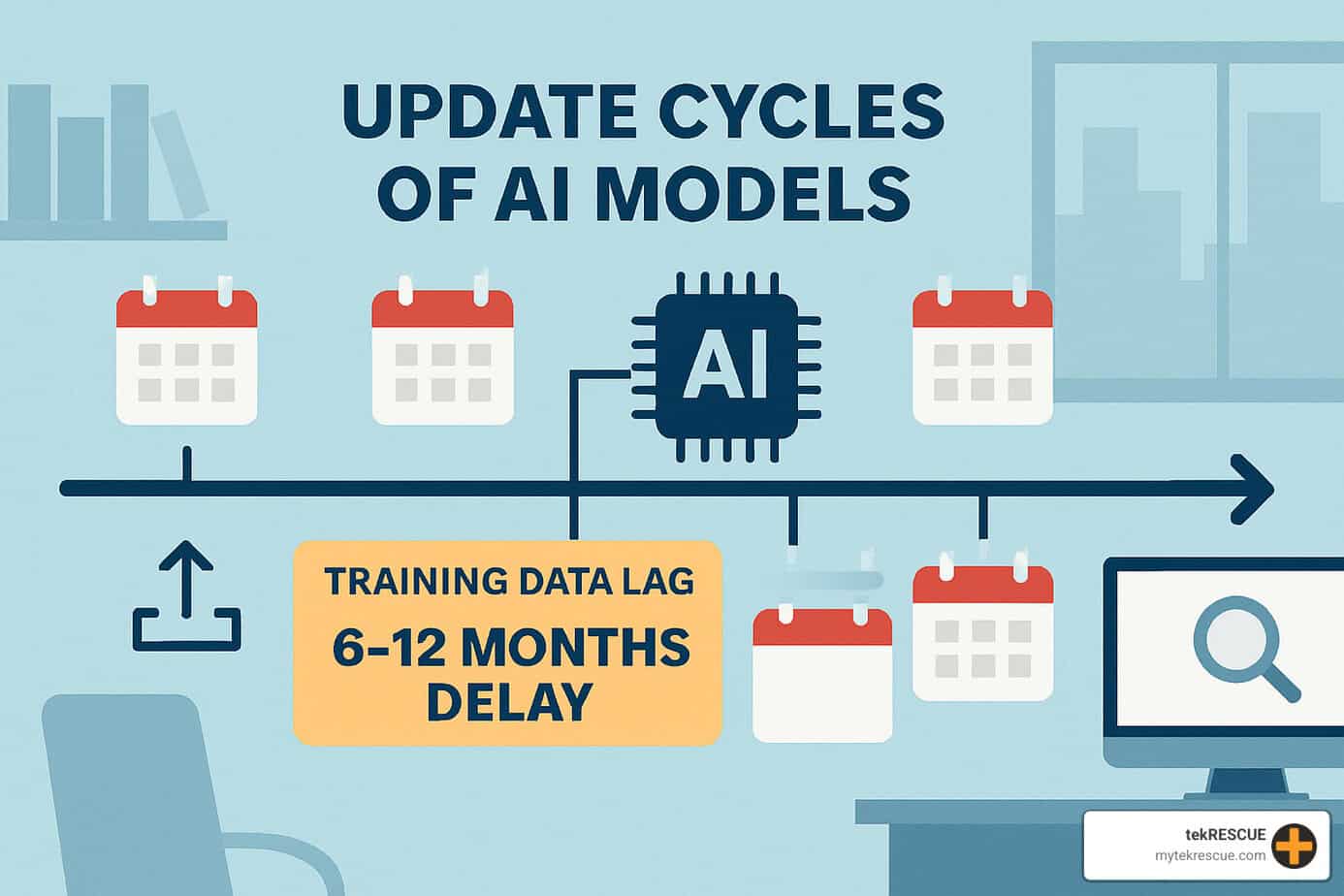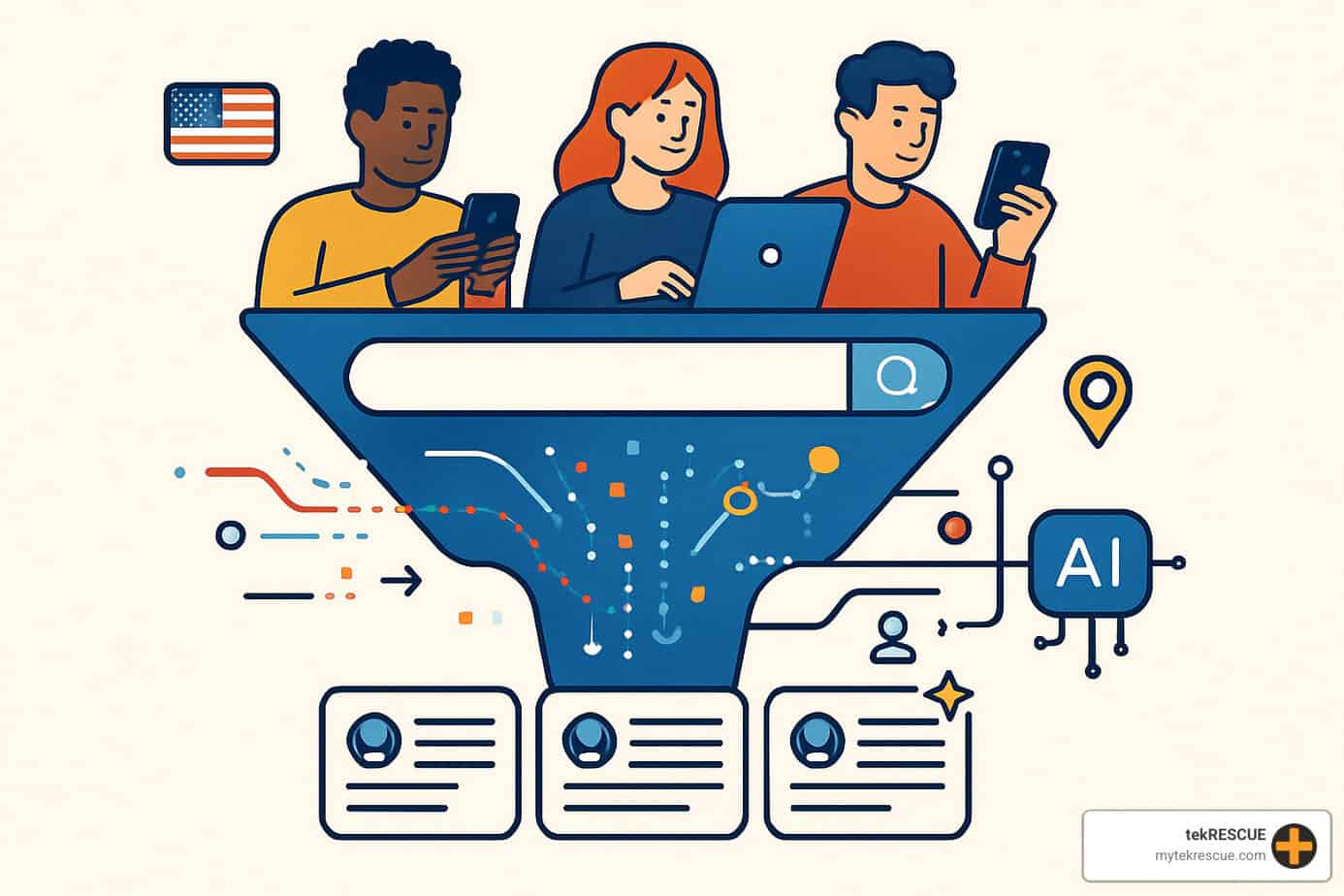

The Definitive Guide to Generative Engine Optimization (AIEO, AISEO, GEO)
The Evolution of Search: Understanding Generative Engine Optimization
Generative engine optimization is the emerging discipline of optimizing digital content for AI-powered search engines and large language models. As traditional search evolves in 2025, businesses must adapt their strategies beyond conventional SEO.
What is Generative Engine Optimization?
| Term | Definition | Focus |
|---|---|---|
| GEO (Generative Engine Optimization) | Optimizing content for AI-driven search engines that generate direct answers | Making content easily cited by AI systems |
| AISEO (AI Search Engine Optimization) | Tailoring content for AI-powered search algorithms | Improving visibility in AI search results |
| AIEO (AI Engine Optimization) | Broader term encompassing all AI content optimization | Holistic approach to AI visibility |
While traditional SEO focuses on ranking in search engine result pages (SERPs), generative engine optimization targets visibility within AI-generated responses from platforms like ChatGPT, Google Gemini, DeepSeek, and Perplexity.
The key differences include:
- Intent focus: Optimizing for conversational queries rather than keywords
- Citation optimization: Making content easily referenced by AI systems
- Structured content: Creating clear, factual content that AI can synthesize
- Authority signals: Building credibility that AI models recognize
As AI continues reshaping how users find information online, mastering GEO/AISEO/AIEO has become critical for businesses seeking digital visibility. With voice searches exceeding 1 billion monthly queries and AI-generated overviews appearing in mainstream search results, the landscape has fundamentally changed.
I’m Randy Bryan, founder of tekRESCUE Digital, where we’ve helped businesses implement effective generative engine optimization (GEO, AISEO, and AIEO) strategies that boost visibility across both traditional and AI-powered search platforms. Let me guide you through this transformative approach to digital marketing.

Who Should Read This Guide
This comprehensive guide is designed for:
- Business owners looking to future-proof their digital presence
- Marketing professionals adapting to AI-driven search landscapes
- IT managers integrating technical SEO with AI optimization
- Content creators crafting material for both human readers and AI systems
If you’re responsible for your organization’s online visibility, lead generation, or digital strategy, understanding generative engine optimization is no longer optional—it’s essential.
TL;DR – Why GEO Matters Now
- Voice search has surged to over 1 billion monthly queries, with 8.4 billion voice assistants expected by the end of 2025
- AI overviews now appear in 35% of search results, often eliminating the need to click through to websites
- Zero-click answers have increased by 65% since 2023, fundamentally changing user search behavior
- Citation visibility in AI responses can drive significant traffic and brand awareness
- Early adopters of GEO strategies are seeing 40-60% increases in relevant traffic
Decoding Generative Engine Optimization (GEO, AISEO, & AIEO) in 2025
The search landscape has transformed right before our eyes. Traditional search engines now feature AI-generated overviews at the top of results, while millions of people turn to AI assistants like ChatGPT, Claude, and Perplexity as their first stop for information. This isn’t just an evolution – it’s a revolution in how people find answers online.

Generative engine optimization represents a fundamental shift in our approach to digital visibility. Think of traditional SEO as trying to get your website to the top of a list, while GEO focuses on getting your content directly quoted or referenced in AI-generated answers. The goal has shifted from “click on my link” to “cite my expertise” – a subtle but powerful difference that changes everything about how we optimize content.
When someone asks ChatGPT or Google’s AI a question, they’re not looking at a page of blue links anymore. They’re reading a synthesized answer with citations. Your mission is to become one of those valued citations, positioning your brand as an authority that AI systems trust enough to quote.
How AI Engines Select & Synthesize Content
Ever wonder how AI search actually works behind the scenes? Most systems use what’s called Retrieval-Augmented Generation (RAG) – a fancy term for a pretty intuitive process:
First, the AI retrieves relevant information from its knowledge base or the web. Then it ranks those sources based on their quality and relevance. Finally, it crafts a coherent answer, citing the most valuable sources along the way.
This process hinges on several key factors that determine whether your content gets cited. AI engines evaluate content based on clarity and factual precision – they’re looking for information that’s easy to understand and verify. They also analyze meaning and context rather than just matching keywords, and they prioritize factual information to avoid “hallucinations” (AI-generated errors).
Different platforms have their own personalities. ChatGPT tends to favor conversational, comprehensive answers. Perplexity is all about real-time information with clear citations. Google’s AI Overview leans heavily on established E-E-A-T signals – Experience, Expertise, Authoritativeness, and Trustworthiness.
What’s fascinating is that research from BrightEdge shows 99.5% of Google AI Overview citations overlap with the top 10 organic search results. This tells us that traditional SEO still forms the foundation of good GEO – you’re just adding new optimization layers on top.
Traditional SEO vs generative engine optimization
While SEO and GEO share common ground, they differ in meaningful ways:
| Aspect | Traditional SEO | Generative Engine Optimization |
|---|---|---|
| Primary goal | Rank web pages in SERPs | Get cited in AI-generated answers |
| Content focus | Keywords and topics | Entities, facts, and clear statements |
| Structure | Web page optimization | Modular, citation-friendly content blocks |
| Metrics | Rankings, clicks, traffic | Citation frequency, impression share, brand mentions |
| Technical emphasis | Crawlability, indexing | Structured data, entity relationships |
| User signals | CTR, bounce rate, dwell time | Content quality, shareability, engagement |
| Update cadence | Algorithm updates | Model training cycles |
In practice, this means your approach needs to shift. Content structure becomes crucial – AI loves clear, factual statements it can easily extract and cite. You’ll need to focus on entity optimization, thinking about people, places, things, and concepts rather than just keywords.
Your content’s E-E-A-T signals matter more than ever, as does citation optimization – making your information easily attributable through clear statements. And everything needs to be conversation-ready, optimized for natural language questions and voice search.
Challenges & Limitations to Expect
Let’s be real – implementing generative engine optimization isn’t without its challenges.

One of the biggest problems is training data lag. Some AI models today are trained on data that’s 6-12 months old, which means your newly optimized content might take time to influence responses. It’s like planting seeds that won’t bloom until next season – patience is required.
You’ll also face unpredictable outputs. AI systems might generate different answers to the same query based on context, user history, or even random variation. This unpredictability means you need broader optimization strategies rather than targeting specific phrasings.
There’s also the issue of limited control. Unlike traditional SEO where you can directly influence ranking factors, you can’t force AI systems to cite your content. You can only create the best possible conditions for citation.
Brand safety concerns arise when your content appears alongside competing or contradictory information. And unlike search algorithms that update continuously, AI models typically refresh every 3-6 months, creating a different update cadence to adapt to.
Attribution issues can be frustrating too – citations may not always include direct links back to your content. And there are important ethical considerations around ensuring AI systems don’t misrepresent your content or use it to generate inaccurate information.
At tekRESCUE, we’ve found that successful GEO strategies account for these limitations through continuous optimization, diversified approaches, and patience. The landscape is evolving rapidly, but with the right strategy, you can position your content to thrive in this new AI-powered world.
7-Step Framework to Master GEO and Boost Visibility
Implementing effective generative engine optimization doesn’t have to be complicated. After working with businesses across Texas, we’ve developed a practical framework that balances both technical needs and content strategy – all while building on your existing SEO foundation.

Think of this framework as your roadmap to AI visibility in 2025. Each step builds on the last, creating a comprehensive approach that helps your content stand out to both traditional search engines and AI systems.
The beauty of this approach is how it complements what you’re already doing. Rather than starting from scratch, we’re adding strategic layers to your existing content strategy. Many of our clients are surprised to find they already have strong foundations – they just need some targeted adjustments to become AI-friendly.
What makes this framework particularly effective is its focus on semantic entities – the people, places, things, and concepts that AI systems use to understand content. By organizing information around these entities and supporting them with structured data, you create content that’s inherently more findable by AI systems.
Engagement signals remain crucial too. When users interact meaningfully with your content – sharing it, commenting on it, or citing it elsewhere – both traditional search engines and AI models take notice. These signals create a virtuous cycle of visibility.
Authority building deserves special attention in the AI era. While backlinks remain important, AI systems increasingly evaluate authority through a broader lens that includes expert credentials, citation patterns, and brand mentions across the web. Building this type of comprehensive authority takes time, but yields powerful results.
Ready to see how this framework can transform your online visibility? Let’s explore each step in detail, starting with reimagining how we approach keyword research for conversational search.
Want to learn more about creating Google-friendly content? Check out our guide to optimizing Google-friendly content for additional insights.
1. GEO Keyword & Entity Research for Conversational Search
The foundation of effective generative engine optimization starts with understanding how people actually talk to AI assistants. Unlike traditional keyword research that focuses on search volume and competition metrics, GEO research needs to capture the natural, conversational way people interact with AI.
Think about it – when someone asks Alexa or Google Assistant a question, they don’t say “best cybersecurity Texas.” They ask, “What’s the best cybersecurity company near me in San Antonio?” This shift to conversational search demands a fresh approach to keyword research. See what I did there?
At tekRESCUE, we’ve found that successful GEO research revolves around four key elements:
Long-tail conversational queries capture how real people ask questions. These natural phrases might be longer but they’re packed with intent. For example, instead of targeting “ransomware protection,” we’d focus on “What’s the most effective ransomware protection for small businesses in Texas?”
Topic clusters help AI systems understand the relationships between concepts. By grouping related topics together, you create a semantic network that AI models can steer more effectively. For a cybersecurity company, this might include clusters around compliance, threat protection, and recovery solutions.
Intent variations acknowledge that people seek the same information in different ways. Some might ask “How do I protect my business from hackers?” while others ask “What cybersecurity measures should my company implement?” Capturing these variations improves your citation chances.
Entity relationships map the connections between people, places, things, and concepts in your industry. For example, connecting your business to specific compliance frameworks like HIPAA or industry-specific security protocols helps AI systems position you as relevant to specific queries.
To put this into practice, try these research techniques:
Voice search simulation – Literally speak your queries aloud as if talking to Siri or Alexa. Record these natural questions and analyze the patterns.
AI prompt exploration – Use ChatGPT with prompts like “What questions would someone have about cybersecurity for a healthcare practice?” to generate authentic question ideas.
Question mining from places where your audience already asks questions – Reddit, Quora, industry forums, or comments sections can reveal exactly how people phrase their queries.
Entity extraction tools can identify key entities in your existing content and suggest relationships to emphasize in future content.
This approach helps you create content that directly answers the questions your potential customers are asking AI assistants. For example, a Texas business might target conversational queries like “How often should a medical practice in Texas update their cybersecurity?” or “What are the HIPAA compliance requirements for data security in small healthcare practices?”
By mapping your content to these natural language patterns, you significantly increase the likelihood that AI systems will select your content as a citation source when generating answers to user queries. This isn’t just about ranking anymore—it’s about becoming the source that AI trusts to answer user questions.
2. Crafting Content Both SEO-Friendly & LLMs-Friendly
Creating content that shines in both traditional search results and AI-generated answers doesn’t have to feel like serving two masters. It’s more like cooking a dish that pleases both parents and kids at the dinner table – with the right approach, everyone leaves satisfied.
The secret sauce lies in how you structure and present your information. When we work with businesses on their generative engine optimization strategies, we focus on a few key ingredients that make content digestible for both humans and AI systems.
First, use clear, descriptive headings that tell readers (and AI) exactly what information follows. Think of these as signposts guiding both through your content. Rather than vague headings like “Our Solutions,” opt for specific ones like “How Our Ransomware Protection Safeguards Your Business Data.”
FAQ blocks work wonders for both traditional SEO and AI visibility. These question-answer pairs mirror how people actually search, especially in voice queries. Plus, AI systems love to extract these neat, self-contained information packets when building responses.
Your content gains serious credibility when it includes first-party data – original research, unique insights, or proprietary statistics that can’t be found elsewhere. AI models are trained to recognize and prioritize unique information, making your content more citation-worthy.
Don’t forget the power of multimedia elements. Images, videos, and infographics not only improve user experience but also provide additional context for AI systems when properly labeled with descriptive alt text.
Perhaps most importantly, craft citation-ready statements throughout your content. Compare these two approaches:
Instead of: “We’ve got pretty good cybersecurity tools that many companies seem to like.”
Write: “tekRESCUE’s advanced threat detection system identifies 99.7% of malware attacks before they can compromise systems, a capability that’s especially critical for healthcare organizations managing sensitive patient data.”
The second statement delivers clear, factual information that an AI can confidently extract and cite in its responses.
Organize your content in modular blocks that completely address specific subtopics. This helps AI systems extract relevant information without losing context – and it makes your content more scannable for human readers too.
For businesses looking to improve their web presence, good design and content go hand in hand. Our guide on web design SEO in 2024 explores how these elements work together to create sites that both search engines and visitors love.
By thoughtfully structuring your content this way, you’re not just optimizing for today’s search landscape – you’re future-proofing your digital presence for wherever AI search technology takes us next.
3. Technical Foundation: Structured Data & Page Experience
Building a solid technical foundation is like constructing a house that both humans and AI can comfortably live in. While content is king, the technical structure determines how easily AI systems can interpret and cite your information.
Structured Data Implementation
Structured data acts as a translator between your content and AI systems. By implementing the right schema markup, you’re essentially handing AI engines a roadmap to your most valuable information.
At tekRESCUE, we’ve found that businesses implementing comprehensive structured data see significantly higher citation rates in AI-generated responses. The most impactful schema types include:
Article schema gives context to blog posts, making them more likely to be cited for informational queries. FAQPage schema helps AI systems confidently extract your questions and answers. HowTo schema makes your instructional content stand out as a process-oriented resource.
For local businesses, LocalBusiness schema connects your content to geographical relevance. Product schema helps AI understand exactly what you’re selling, while Organization schema establishes your company identity in the digital ecosystem.
Page Experience Optimization
AI engines and traditional search algorithms both value content that delivers an excellent user experience. Core Web Vitals remain crucial signals of quality:
Your page should load quickly with Largest Contentful Paint (LCP) under 2.5 seconds. Users expect immediate interaction, so keep First Input Delay (FID) under 100ms. Nothing frustrates users more than jumping elements, so maintain Cumulative Layout Shift (CLS) under 0.1.
Mobile optimization isn’t optional anymore—it’s fundamental. With over 60% of searches now happening on mobile devices, responsive design that works seamlessly across all screen sizes is essential for both human users and AI systems.
Accessibility features like proper ARIA labels, descriptive alt text, and semantic HTML don’t just help users with disabilities—they also provide additional context that helps AI systems better understand your content.
Content Structure
How you organize information on the page significantly impacts AI interpretation. Think of your content structure as a conversation flow:
Semantic HTML uses appropriate tags like <article>, <section>, and <nav> to signal content purpose—essentially giving AI systems conversational cues. A clear table of contents helps both users and AI systems steer complex information efficiently.
Organize information in a logical hierarchy, starting with general concepts and moving to specific details. This mirrors how humans naturally process information and helps AI systems establish relationships between ideas.
Consistent formatting for similar content types creates patterns that AI can recognize and interpret. For example, using the same structure for all product descriptions makes it easier for AI to extract and compare features.
The beauty of technical optimization is that it serves both traditional SEO and generative engine optimization AISEO AIEO simultaneously. By building this strong foundation, you’re creating content that’s not only findable but also highly citable by AI systems.
For more insights on creating technically sound websites that perform well in both traditional and AI search, check out our guide on web design SEO in 2024.
4. Distribution & Engagement Signals for AI Models
Getting your content in front of the right audience isn’t just good marketing—it’s essential for generative engine optimization AISEO AIEO. AI models are increasingly looking at how real people interact with your content to determine if it’s worth citing.
Think of distribution and engagement as digital word-of-mouth. When people share, comment on, or otherwise engage with your content, it sends powerful signals to AI systems that your information is valuable and trustworthy.
Platform Diversity
Your website should serve as home base for your authoritative content, but don’t stop there. AI systems gather information from across the digital ecosystem. Share your expertise where your audience already spends time—whether that’s LinkedIn for B2B content, Instagram for visual stories, or industry forums where professionals exchange ideas.
We’ve seen remarkable results when businesses repurpose their written content into different formats. A comprehensive cybersecurity guide might become a YouTube tutorial, an infographic shared on social media, and a presentation for a webinar. Each format reaches different segments of your audience while reinforcing your authority on the topic.
User-Generated Content (UGC)
Nothing validates your expertise quite like real people engaging with your ideas. When readers leave thoughtful comments on your blog posts or share your content with their own networks, AI models take notice.
Encourage meaningful engagement by ending your content with thought-provoking questions. Respond promptly to comments, creating a two-way conversation that signals your active presence and commitment to your audience.
Reviews and testimonials also play a crucial role in building trust signals that AI can recognize. Authentic feedback from real customers carries significant weight in both human and artificial evaluations of your content.
Content Freshness
AI models, like people, prefer recent information—especially in fast-changing fields like technology and digital marketing. A comprehensive guide from 2023 might contain outdated information in 2025, making it less valuable for AI to cite.
Keep your content current through:
- Regular publishing of new, valuable information
- Strategic updates to existing content, adding new insights or data
- Connecting evergreen topics to current trends and developments
- Seasonal refreshes that align with your audience’s changing interests
For example, a basic guide about data security might be updated to address the latest ransomware threats or regulatory changes, signaling to AI systems that your content remains relevant and authoritative.
Content distribution isn’t a one-and-done activity. The most effective generative engine optimization strategies involve consistent effort across multiple channels, creating a web of signals that help AI systems recognize and cite your expertise.
At tekRESCUE, we’ve found that businesses that distribute their content across at least three different platforms see significantly higher citation rates in AI-generated responses compared to those who publish exclusively on their websites.
5. Authority Building: E-E-A-T, Citations, Brand Mentions
When it comes to generative engine optimization, Google’s E-E-A-T framework has taken center stage in 2025. These four pillars—Experience, Expertise, Authoritativeness, and Trustworthiness—aren’t just nice-to-haves anymore; they’re essential signals that AI models use to determine which sources deserve citation.

Expertise Demonstration
Think of expertise as your digital resume. AI models are scanning for clear signals that you know what you’re talking about.
Detailed author bios make a tremendous difference here—they provide context about who’s behind the information. We’ve seen significant improvements in citation rates when content includes credentials that establish real-world expertise. Don’t be shy about showcasing your team’s qualifications and experience.
Including expert quotes from recognized authorities adds another layer of credibility. When AI models see your content referencing established voices in your field, it reinforces your own authority by association. This doesn’t mean randomly dropping names—it’s about thoughtfully incorporating relevant insights that improve your content.
Case studies and original research serve as powerful trust signals because they demonstrate practical application and unique insights. When you document real-world results or publish findings that can’t be found elsewhere, you’re creating citation-worthy material that AI systems naturally gravitate toward.
Citation Building
Building quality citations is like creating a web of trust around your brand.
Quality backlinks remain the backbone of digital authority in 2025. The key word here is quality—a single mention from a respected industry publication carries more weight than dozens of low-quality directory listings. Focus your efforts on earning links from sources that AI models already trust.
Industry mentions beyond traditional backlinks matter too. When your brand gets referenced in trade publications, podcasts, or video content, these mentions create a broader footprint that AI systems can detect. This diverse citation pattern signals real-world relevance.
Resource listings in authoritative directories still provide value, especially in specialized industries. Being included in a curated list of top providers or experts in your field signals that others in your industry recognize your authority.
Brand Authority
Consistent brand messaging across all channels creates a coherent identity that AI systems can more easily recognize and trust. When your positioning, voice, and key messages align across your website, social media, and guest content, you build a stronger authority signature.
Thought leadership has become increasingly important as AI models seek to identify forward-thinking voices. Publishing insightful perspectives on industry trends—especially those that prove accurate over time—helps establish your brand as a reliable source for future-focused information.
Community involvement in industry forums, social media groups, and professional organizations creates multiple touchpoints that reinforce your expertise. Active participation shows you’re engaged with current conversations and contributing valuable insights to your field.
At tekRESCUE, we’ve seen how these authority-building strategies create a network of trust signals that help AI systems recognize and prioritize content as authoritative. The businesses that invest in comprehensive authority development are the ones consistently earning citations in AI-generated responses.
Authority building isn’t a one-time effort—it’s an ongoing process that requires consistent attention and authentic engagement with your industry community. The trust you build today becomes the foundation for your visibility in tomorrow’s AI-driven search landscape.
6. Measurement & Analytics for Generative Engine Optimization Success
How do you know if your GEO strategy is actually working? Unlike traditional SEO where rankings and traffic tell most of the story, measuring success in the AI search landscape requires a different approach.
Since our goal is to get cited within AI-generated responses rather than just ranking a webpage, we need to track metrics that reflect this new reality.
Citation Tracking
The heart of generative engine optimization measurement is understanding how often your content gets referenced by AI systems. This includes:
Mention frequency shows how often your brand or content appears in AI responses to relevant queries. This is your citation rate – the digital equivalent of being the source everyone quotes.
Citation context matters tremendously. Is your brand being referenced positively? Are you being cited for factual information or opinions? The context around citations can be as important as the citations themselves.
Citation prominence reveals whether you’re being featured as a primary authority or just one of many sources. Primary citations typically receive more visibility and credibility in AI-generated responses.
Visibility Metrics
Beyond citations, you’ll want to track where and how your content appears:
AI Overview appearances track how often your content gets featured in Google’s AI-generated summaries at the top of search results. These prominent placements can drive significant brand awareness even without clicks.
Answer box inclusion measures whether your content is selected for featured snippets and direct answers in traditional search results, which often feed into AI responses.
Voice search responses monitor whether voice assistants like Alexa, Siri, or Google Assistant are selecting your content when answering relevant queries. With over a billion monthly voice searches, this represents a massive opportunity.
Engagement Indicators
The user journey has changed dramatically with AI search, requiring new engagement metrics:
Zero-click engagement recognizes that users may consume your information without ever visiting your website. Brand impressions and awareness can grow substantially through AI citations alone.
Post-AI-interaction traffic tracks visitors who come to your site after seeing your brand cited in an AI response. These visitors often have higher intent and engagement rates.
Cross-channel attribution helps understand how users move between AI platforms and your owned properties, giving you insight into the complete customer journey.
Practical Measurement Tools
Several tools can help track these new metrics:
The HubSpot AI Search Grader evaluates your content’s readiness for AI search and provides actionable recommendations for improvement.
Various Chrome extensions have emerged that track AI Overview citations and sources, helping you monitor your visibility in these crucial placements.
Custom prompt testing involves systematically testing how different AI systems respond to queries relevant to your business. This manual approach provides valuable qualitative insights about how and when your content gets cited.
Brand monitoring tools help track mentions across platforms, including those generated by AI systems.
For businesses looking to dive deeper into analytics approaches that incorporate AI signals, our guide on AI for business analytics provides a comprehensive framework.
The measurement landscape for generative engine optimization continues evolving as quickly as the technology itself. The most successful businesses will combine traditional metrics with these emerging indicators to build a complete picture of their digital presence across both human and AI-mediated channels.
7. Common Mistakes & How to Avoid Them
When implementing generative engine optimization strategies, we’ve noticed several recurring pitfalls that can derail even the most promising efforts. These mistakes aren’t just theoretical – they’re real challenges businesses face when adapting to AI-driven search.
Content Quality Issues
Creating truly valuable content remains the cornerstone of both traditional SEO and GEO. Unfortunately, many businesses fall into the trap of producing thin content that lacks depth and substance. AI systems are remarkably good at identifying comprehensive resources that thoroughly address topics from multiple angles.
Similarly, keyword stuffing has become even more problematic in the age of AI. Modern language models are trained to recognize natural language patterns, making awkward keyword repetition not just ineffective but potentially harmful to your visibility.
“We’ve seen businesses create content that’s technically ‘optimized’ but lacks any real insights or factual substance,” says Randy from tekRESCUE. “Without clear data points, research findings, or expert perspectives, AI systems simply have nothing worth citing.”
Perhaps most critically, poor content structure makes it nearly impossible for AI to extract and synthesize relevant information. Without clear headings, logical progression, and well-organized sections, your valuable insights might remain hidden from AI systems.
Technical Oversights
The technical foundation of your content plays a crucial role in how AI systems interpret it. Missing structured data is like speaking to AI without providing context – schema markup helps AI understand what your content represents, whether it’s a product description, how-to guide, or FAQ.
Many websites also suffer from inconsistent entity references, using different terms for the same concept across their content. This inconsistency confuses AI systems and dilutes the semantic strength of your content.
Basic performance issues like slow loading speeds continue to signal low quality to both human visitors and AI systems. Similarly, inaccessible content hidden behind complex navigation, excessive popups, or login requirements may be overlooked entirely by AI crawlers.
Strategic Missteps
Even with perfect content and technical implementation, strategic mistakes can undermine your GEO efforts. Ignoring LLM updates is particularly damaging – AI systems evolve rapidly, with new capabilities and priorities emerging with each model version.
Another common mistake is over-optimizing for a single platform. Different AI systems (Google Gemini, ChatGPT, Perplexity) have different approaches to content evaluation and citation. A diversified approach yields more consistent results across platforms.
Many businesses also make the mistake of neglecting traditional SEO in their rush to optimize for AI. The reality is that core SEO principles remain the foundation upon which effective GEO strategies are built – you need both to succeed.
Finally, many businesses approach GEO with unrealistic timelines, expecting immediate results when AI model training cycles mean changes can take months to impact results. Patience and persistence are essential.
Best Practices
To avoid these pitfalls, focus on creating comprehensive, high-quality content that thoroughly addresses user needs from multiple angles. Implement technical best practices including structured data, consistent entity references, and optimal performance metrics.
Balance your approach by diversifying optimization strategies across both traditional SEO and AI-specific techniques. Stay informed about AI system updates through industry resources and testing, and set realistic expectations about timelines for seeing results.
At tekRESCUE, we’ve helped businesses steer these challenges with a methodical approach that prioritizes sustainable, future-proof optimization strategies. By understanding and avoiding these common mistakes, you can implement more effective GEO approaches that drive long-term visibility in both traditional search and AI-generated responses.
8. Future Trends: Real-Time RAG, Personalization, Privacy
The landscape of generative engine optimization continues to evolve at lightning speed. Understanding what’s coming next helps you stay ahead of competitors and prepare your business for the next wave of AI search innovations.

Real-Time Retrieval-Augmented Generation (RAG)
Remember when AI responses were always a few months behind current events? Those days are quickly fading. AI systems are now incorporating real-time information in ways that dramatically change how we approach optimization.
The most exciting development is reduced training lag. Instead of waiting 6-12 months for new content to influence AI responses, we’re seeing models updated more frequently—sometimes weekly for certain topics. This means your freshly published content can gain AI visibility much faster than before.
We’re also witnessing the rise of live search integration, where AI systems combine their pre-trained knowledge with fresh search results. This hybrid approach gives users the best of both worlds: comprehensive background information alongside breaking news and updates.
Many businesses don’t realize that continuous learning systems are already here. These sophisticated models adapt based on user interactions, gradually refining their responses without requiring complete retraining. This makes staying visible a more dynamic process that rewards consistent engagement.
Personalization in AI Responses
AI is getting personal—and that’s changing everything about how we optimize content.
The shift toward user-specific contexts means AI systems now deliver different answers to the same question based on a user’s search history and preferences. This requires businesses to create content that resonates across multiple contexts rather than optimizing for a single “perfect” answer.
Location awareness has become remarkably sophisticated in 2025. AI systems now deliver hyper-local information without explicit location prompts, making local optimization essential even for businesses that previously focused on national visibility.
Perhaps most fascinating is the evolution of multi-modal responses. AI engines no longer just return text—they combine text, images, video clips, and interactive elements into cohesive answers. This means optimizing your visual content is now just as important as your written material.
Privacy and Compliance Shifts
As AI capabilities expand, so do privacy concerns and regulations. This creates both challenges and opportunities for forward-thinking businesses.
The growing emphasis on zero-party data (information explicitly shared by users) is reshaping how personalization works. Businesses that build trust and encourage direct information sharing gain advantages in this environment.
Consent-based personalization has become the standard, with AI systems providing much more transparent user controls over data usage. This shift rewards businesses that prioritize ethical data practices and clearly communicate their privacy policies.
We’re also seeing greater fragmentation in regional compliance requirements. What works for AI visibility in Texas might not work in California or the EU due to differing privacy regulations. This requires more nuanced, region-specific optimization strategies.
Emerging Optimization Opportunities
These evolving trends create exciting new opportunities for businesses ready to adapt their generative engine optimization strategies.
Multi-modal content optimization is perhaps the biggest opportunity. Businesses that create cohesive experiences across text, audio, video, and interactive formats gain significant advantages in AI visibility. We’re helping clients develop content ecosystems rather than isolated pieces.
Contextual relevance has become a key differentiator. Content that adapts to different user situations—whether they’re researching, ready to purchase, or seeking support—performs dramatically better in AI-generated responses.
Building ethical AI engagement practices isn’t just about compliance—it’s becoming a competitive advantage. Users increasingly favor businesses that demonstrate transparent, responsible AI practices, and AI systems are getting better at recognizing these signals.
At tekRESCUE, we’re helping businesses prepare for these emerging trends by implementing forward-looking strategies that balance current best practices with future-ready approaches. The most successful organizations view these changes not as obstacles but as opportunities to connect more meaningfully with their audiences.
Want to learn how your business can leverage these future trends? Explore our AI for business analytics resources to stay ahead of the curve.
Conclusion & Next Steps
The rise of AI-powered search has fundamentally changed how users find information online. Generative engine optimization has emerged as a critical discipline for businesses seeking to maintain and improve their digital visibility in this new landscape.

Key Takeaways
When we work with Texas businesses at tekRESCUE, we emphasize that GEO isn’t replacing traditional SEO—it’s enhancing it. Both approaches now work hand-in-hand to create comprehensive visibility across all search platforms.
What we’ve finded is that content quality matters more than ever in this new landscape. AI engines consistently favor clear, factual, well-structured content that directly addresses user queries. The technical foundation remains crucial too—proper structured data implementation and performance optimization give AI systems the context they need to properly understand and cite your content.
We’ve seen how authority signals significantly influence AI citations. Building those Experience-Expertise-Authoritativeness-Trustworthiness signals across all your digital channels dramatically improves your chances of being cited in AI responses.
One adjustment many businesses struggle with is measurement. Traditional metrics like rankings and traffic still matter, but you’ll also need to track citations and AI visibility to get the complete picture of your digital presence.
Perhaps most importantly, patience pays off. AI systems update on different cycles than traditional search engines. The improvements you make today might take several months to fully impact your visibility, but the long-term benefits are substantial.
Your Action Plan
Ready to future-proof your digital presence? Here’s where to start:
Begin by auditing your current content through an AI lens. Look at your most important pages and ask: “Would an AI system easily understand what we’re saying here? Are we providing clear facts and insights worth citing?”
Next, implement structured data across your key pages. This technical foundation helps AI systems properly categorize and interpret your content.
Then focus on optimizing for the conversational queries your customers actually use. These natural language questions are increasingly how people interact with AI search tools.
Building authority signals should be an ongoing priority. Strengthen your expertise indicators across all channels—your website, social platforms, industry publications, and anywhere else your brand appears online.
Set up a system to monitor how your content appears in AI-generated answers. This feedback loop will help you refine your approach over time.
And finally, stay curious and adaptable. The AI search landscape is evolving rapidly, and the businesses that thrive will be those that continuously learn and adjust their strategies.
At tekRESCUE, we specialize in helping Texas businesses implement effective generative engine optimization strategies that deliver real results. Our approach combines technical expertise with content optimization to improve visibility across both traditional and AI-powered search platforms.
Want to see where your business stands in the new AI search landscape? Schedule a free GEO audit with our team. We’ll identify specific opportunities to improve your visibility in AI-generated responses and create a roadmap for implementation.
The future of search isn’t coming—it’s already here. With the right approach, your business can not only survive but thrive in this new AI-powered landscape.
Table of Contents









